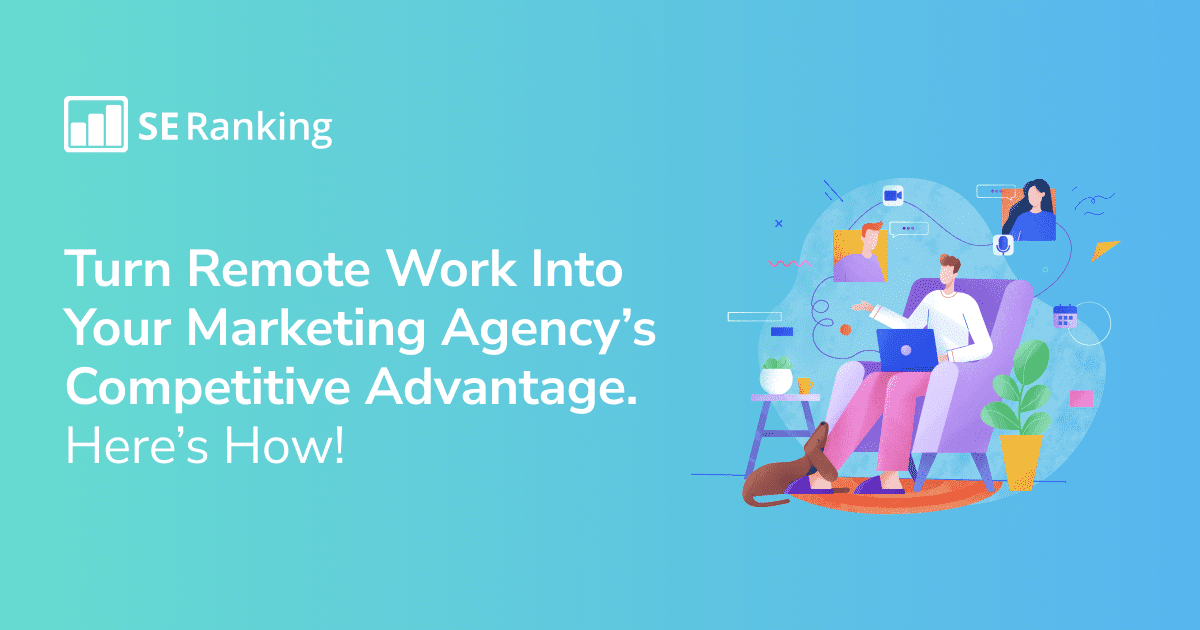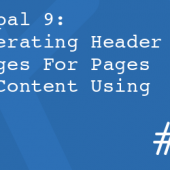[ad_1]
Thank you for subscribing!
After the global pandemic, companies the world over had to change their business model from in-office to remote work. Now, people are discovering how beneficial working from home can be—and for the environment, too!
Did you know that working from home just one day per week could drastically reduce MtCO2 emissions?
You heard that right! If commuters from the US, EU and China collectively worked remotely once per week, according to Statista, global emissions could drop by a whopping 24 million MtCO2s a year.
Some other perks of working from home include higher flexibility, better work-life balance and fewer distractions. The remote work model is also great for business owners because it drastically reduces overhead costs and simplifies the hiring process. Companies struggling to source talent in their local markets can easily nip that problem in the bud by hiring employees from other cities or even other countries.
This especially holds true for marketing agencies. A recent survey showed that 80% of agencies believed remote or hybrid work could bring value to their company culture, work-life balance, productivity, and so much more!
This doesn’t imply, however, that remote work is a catch-all solution for every business’s issues or needs. Working from home isn’t for everyone because there are quite a few unique challenges associated with it:
- Remote work can make communication difficult
- It can be easy to lose sight of what’s going on in between employees and leadership
- And without that face-to-face contact, it can be hard to keep people accountable
The good news is you can respond to these challenges by optimizing your remote workflow.
1. Use synchronous and asynchronous video
You’ve probably heard of web conferencing by now.
Web conferencing—which has underwent one of the most radical evolutions in workplace communication post-COVID-19—is a powerful tool for agency teams. Daily meetings–also known as “standups”—breed team morale and help with prioritization on the fly.
Some easy-to-use and modern communication tools for web conferencing include:
- Zoom
- Slack Video Calls
- Google Meets
- Microsoft Teams
You can even use completely free tools like Facebook Live or YouTube Live to host interactive meetings and webinars in real time. These tools (similarly to Zoom and Google Meets) have a live chat feature that your audience can use to provide feedback while you’re giving a presentation or hosting a roundtable discussion with other industry leaders.
Though synchronous communication is quickly becoming the industry standard for remote work, it isn’t the only useful tool. You may not always want to hop on a live video call or on some days you’re just strapped for time. Asynchronous (or async) video will be your bulwark in today’s post-COVID world against the dreaded Zoom fatigue!
What exactly is async video?
Async video is essentially video content that is not shared in real-time. This content is produced and made ready for others to observe after it is published.
Some ways to put async videos to use include:
- Live stream recordings
- Webinars
- Sharing status updates
- Sharing video messages on social media
- Sending video emails
- And more
The most popular async video tools to date are Loom and Canva Video. On top of that, you can find tools that can help you use async videos at a new level. For example, there are tools that enable international agencies and clients to translate async videos from one language to another.
2. Optimizing lead generation asynchronously
Many remote marketing agencies have trouble generating traffic and leads. The remote environment also offers fewer opportunities to set up regular brainstorming meetings. Without scheduling meetings on a regular basis, it can be harder for agencies to agree upon the definition of a sales-qualified lead (SQL). There are also no opportunities for real-time troubleshooting when closing deals.
But there are many efficient asynchronous processes you can use to tighten up your lead funnel in a purely remote work environment. These include:
- Define your steps in the funnel explicitly. Everyone involved in the lead generation and selling process should know what a good lead looks like, what a hot lead looks like, and what a closed deal means. Get tight around that and use a work management tool (more on that later) to track your funnel.
- Focus on the bottom of funnel channels like targeted Google Ads, SEO and affiliate marketing. All are all super viable ways to drive the most targeted leads to your agency. Targeting this type of lead means you won’t have to jump through as many sales qualification hoops and there will be larger deal sizes because of it–which means better unit economics for you.
- Focus on high value customers. Feel free to focus your advertising on particular regions or segments. If you’re running LinkedIn Ads, for example, consider targeting CMOs of big companies rather than small business owners.
- Get deals done quickly. We live in an era of infinite choice. Momentum can get easily lost when there’s too much time in-between Zoom meetings with potential clients. It’s important to move follow-up meetings along quickly in every phase of the sales cycle.
As is probably clear by now, fewer leads that are more qualified are superior to heaps of poor quality leads—particularly in a remote environment.
3. Get more organized around data
Data talks. It’s the best way to understand how your business is working. It helps you figure out which clients are profitable, which ones are not, and if you need to double down in any one place. Plus, if you bring data to your sales optimization processes, you should also close more deals.
The best ways to get organized around data are:
- Keeping track of client insights: Do you understand the unit cost of your clients? If you’re not tracking hours or costs to service a client, you’re missing out on valuable data points that can help you optimize your business and make thousands more per month. Do you know where your leads come from? By understanding client metrics, you can better optimize your remote team’s priorities to align with agency financial goals and better optimize cash flow.
- Getting client marketing data organized: If your agency is remote, you have to prove your worth without the luxury of in-person meetings with clients. So one of the best ways to prove value to a client is to lead with data. Use keyword rankings and traffic, number of deliverables, logged hours, and whatever else you do that is adding value to your clients’ business. Craft detailed reports to always keep your clients in the loop, or even create a separate account for your clients to let them access raw marketing data right in your software. Consider choosing from SE Ranking’s 12 different report templates. With these reports (both automatic and manual options are available), you can share key insights on site backlinks, tech issues, ranking progress, etc. with your clients. On top of that, SE Ranking has a guest link feature, and it allows you to easily create extra clients’ accounts with restricted permissions.
Always remember to take action with your data. Nothing is worse than an agency that doesn’t change their strategy even when the data plainly says, “this isn’t working!” If you’ve worked hard to compile data for a client, don’t be afraid to share both the good news and the bad. While nobody wants to deliver bad news, most clients will rest assured knowing that you ran the numbers and arrived at an answer rather than having attempted to pull the wool over their eyes. Plus, catching high CPAs or an ineffective channel early on gives you time to pivot your strategy and drive results for agency clients.
4. Use a work management tool
If you’re not already using a work or task management tool, now’s the time to start. Work management tools can help you keep track of all the tasks you need to do and when they’re due. They can also help you delegate tasks and keep track of who’s doing what.
Some popular work management tools include Jira, Asana, Trello, and Monday.com. The best solutions enable you to:
- Communicate with your team often and be as transparent as possible.
- Regularly check in on your progress and update your team on your status.
- Make sure to keep your work hours consistent with your team’s.
- Plan your work more effectively based on your previous progress
- Stay focused and avoid distractions.
Many remote work management tools have specially-designed dashboards pre-customized for agency work. Consider using campaign planning, content calendar, or even performance marketing dashboards that come out of the box with some project management tools.
5. Get smart about communication tools
As a remote agency, it is important to be able to communicate with your team members. There is a lot that can go wrong when you’re not in the same office as them. You may be working with different time zones, and you may not be able to see their faces when you talk. There are a lot of tools that can make remote communication easier.
For example, Slack is great for remote marketing agencies because it has many features that are made specifically for aiding real-time communication and collaboration between team members.
Some of Slack’s nifty features include:
- Slack Video Chat
- Channels
- Huddles (quick voice or video calls)
- Set your availability
- Reminders
- Apps Integration
- Messaging
- And so much more!
By creating specific channels for different projects and tasks, you can keep your team organized and streamlined. Additionally, Slack allows for easy file sharing.
Also try Workplace Groups by Meta, Chanty or Fleep. The former contains a knowledge library and the latter two have elements of project tracking built right in. All are incredibly powerful for bringing remote agency teammates together.
6. Encourage breaks
Working remotely can be liberating for many, but it can also be easy to get lost in your work. Encouraging breaks can help to keep your team members fresh and focused. Whether it’s taking a quick walk around the block or spending a few minutes on a fun task, breaks can help to improve productivity. In fact, a study proved that breaks as small as 40 seconds improve concentration.
It pays to let your remote agency employees take a break. And don’t forget to do the same for yourself!
Conclusion: Use asynchronous work as a competitive advantage
Remote work can make it hard to communicate, align leadership and staff, and can even erode morale and trust between teammates if the tools mentioned above are improperly used or not used at all.
Fortunately, asynchronous work is making it easier for agencies to conduct business remotely and effectively by introducing new tools and processes that help to eliminate Zoom fatigue and constant work attachment. Use these tools to your competitive advantage when sourcing talent and operating your business.
Remote agencies:
- Save money on office space
- Put effective task management systems in place using asynchronous tools that streamline both tasks and communication processes
- Can be more data-driven
Remote agencies can be just as happy and productive as in-office agencies if you build your culture around the right practices and tools.
[ad_2]
Source link



